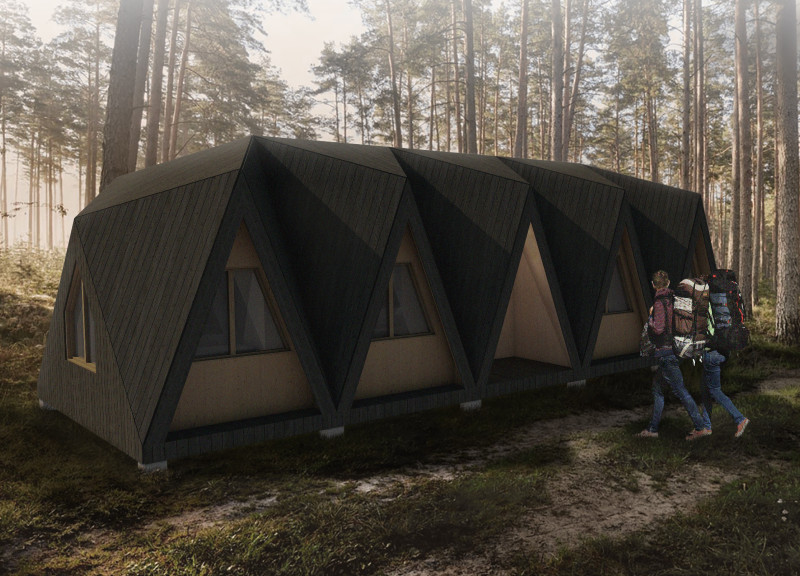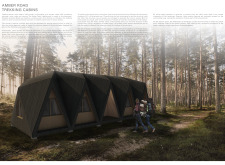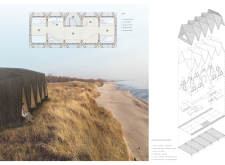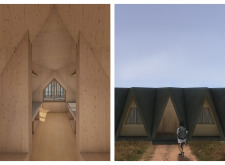5 key facts about this project
At its core, the project serves as a multifunctional space designed to foster community interaction and promote a sense of belonging. The layout reflects a careful consideration of spatial relationships, ensuring that each area not only stands alone in its function but also contributes to the overall experience of the project. The design emphasizes openness; large windows and strategically placed openings allow natural light to pour in, creating inviting spaces that blur the lines between the indoors and outdoors. This design choice enhances the ambiance of the interior while connecting users to the external environment.
The materiality of the project is equally significant, with a palette that emphasizes sustainability and durability. The primary materials utilized include locally sourced timber, which not only fosters a sense of place but also minimizes the project's carbon footprint. Incorporating recycled concrete adds to the structure's robustness and longevity, while expansive glass facades enhance transparency and visual continuity. Such choices reflect a conscious effort to balance practicality with aesthetic considerations, inviting occupants to engage with both the physical and cultural landscape.
In terms of architectural design, the project employs a distinctive approach that maximizes functionality within a coherent aesthetic framework. The architecture features clean lines and a minimalist silhouette, allowing the structural elements to speak for themselves. The inclusion of green roofs not only adds to the visual appeal but also promotes biodiversity and contributes to the building's energy efficiency by regulating temperature.
Unique design elements distinguish this project from others in its category. The integration of outdoor spaces, such as terraces and green courtyards, fosters a connection with nature and encourages outdoor activities. These areas serve as extensions of the interior spaces, offering opportunities for relaxation and social interaction. Furthermore, the thoughtful landscaping around the building complements the architecture while providing a serene environment that enhances the overall experience.
The design also reflects an understanding of contextual sensitivity; it respects the scale and character of the existing neighborhood while introducing a contemporary flair. The use of harmonizing colors and materials aligns the project with its surroundings, reinforcing the notion that modern architecture can coexist gracefully with historical and environmental contexts.
As the project continues to develop, it promises to be a center for community engagement, offering programming that reflects the needs and aspirations of local residents. The architect's vision, combined with a commitment to sustainability and thoughtful design, results in a project that not only fulfills its immediate purpose but also contributes positively to the community at large.
For those interested in delving deeper into this architectural masterpiece, exploring the architectural plans, sections, designs, and broader architectural ideas will provide further insights into the intricacies of the project. Each aspect reveals how the design choices serve both function and aesthetic, showcasing a well-rounded approach to contemporary architecture. Engaging with these elements will enrich your understanding of the thought and intention that underpin this compelling architectural endeavor.


























